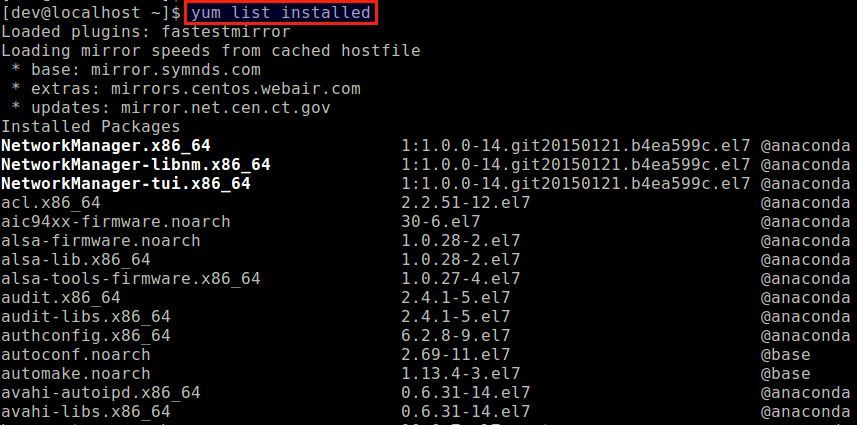
These serial number can further be used to perform some operations like This will provide list of all transactions with a serial number assigned to all transactions. To check the history for yum command, we can execute Note:- This command runs for a long time. To check the local rpm database for errors, If we need information for the enabled repositories, we can use To list down all the yum repositories enabled on the system, To find packages with the search term in name & description, useġ4- List updates information for packages To get the name of packages for the mentioned file, use To display a list of all dependencies required by a package, To display the complete information about a package, To list all available & installed packages, To list all available packages from the repositories,

If you need to list down all the group packages, the command is, To install a group of packages onto the system, use There is another command to remove package & also remove other additional unneeded packages, To remove a package, we can use either of the following two commands, To reinstall a package on the system, to address any issue that might have arisen due to misconfiguration or deletion of a file, use the following command, To downgrade an installed package that has been updated previously, we can use the following command, Rather than updating complete packages, we can only apply the updates to security related packages, We can also update a package to a particular version with the option ‘ update-to’. To update all the installed packages on the system, use To update a single package, the command is If we have an rpm package available on the local system or we have an URL, we can also install it with yum,

To install a package, use the following command,Ģ- Install a package from the local system, http or ftp Let’s see the syntax for using yum command in Linux. In this tutorial, we will learn how to use the Yum command in Linux. Recommended Read: Examples on how to use RPM command in LinuxĪlso Read: Beginner’s guide to Backup Postgres Database


While using RPM for installing packages, we are required to install all the dependencies before we can install the package but YUM automatically resolves & installs dependencies without us having to download & install every dependency. It is used to install, remove, update & to gather information about rpm packages through command line interface or by using graphical mode. YUM or Yellowdog Updater Modified is a utility for managing of rpm packages & is available for all Redhat OS & other Linux distros based on Redhat.


 0 kommentar(er)
0 kommentar(er)
